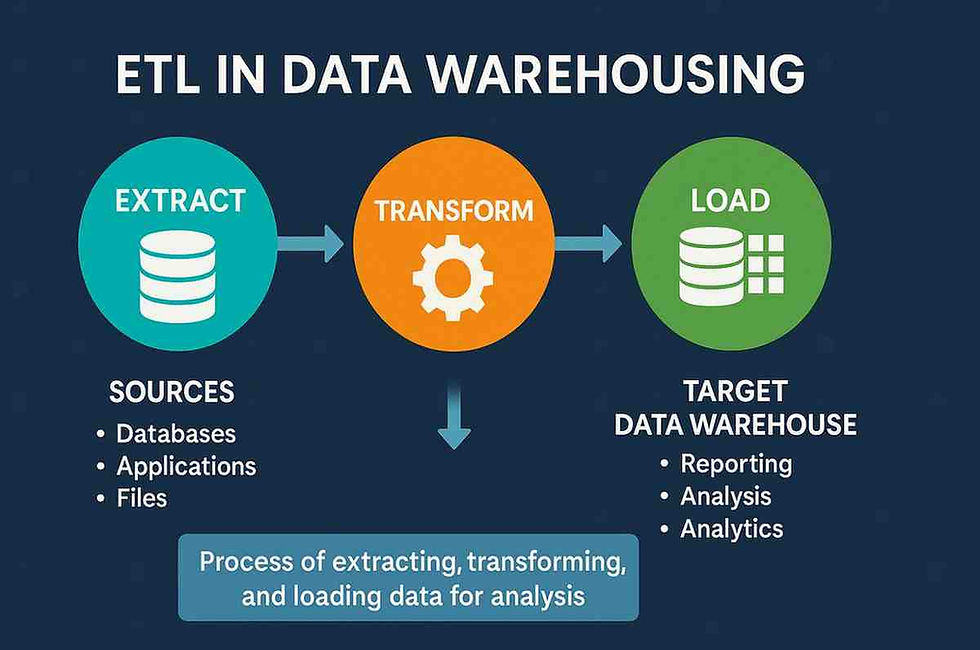Your Comprehensive Guide to Benchmarking Tests
- Gunashree RS
- Jul 29, 2024
- 7 min read
Introduction
Benchmarking tests play a crucial role in ensuring software quality and performance. These tests help you measure your product or system's performance against established standards, providing insights into areas for improvement. Whether you're developing a new application or optimizing an existing system, understanding benchmarking tests can help you achieve your desired performance outcomes.
What Are Benchmarking Tests?
Benchmarking tests are designed to evaluate the performance of a product, system, or component against predefined standards or benchmarks. These tests help identify strengths and weaknesses, enabling you to make informed decisions about performance optimization. Benchmarking tests can be applied to various aspects of a system, including hardware, software, and network components.

Purpose of Benchmark Testing
The primary purpose of benchmark testing is to evaluate the performance of a product or system against established standards. This process allows you to:
Identify Strengths and Weaknesses: Understand where your product excels and where it needs improvement.
Optimize Performance: Make informed decisions about how to improve your system's performance.
Ensure Quality Assurance: Verify that your product meets performance expectations and standards.
Additional Purposes
Development Evaluation: Assess new systems and products during the development process to identify areas for improvement before release.
Existing System Evaluation: Optimize the performance of existing systems by identifying bottlenecks and areas for enhancement.
Quality Assurance: Ensure that products and systems meet user performance expectations as part of an overall quality assurance process.
Types of Benchmark Tests
Benchmark tests come in various forms, each focusing on different aspects of system performance. Here are some common types:
System Benchmarking
System benchmarking evaluates the performance of an entire system, including hardware, software, and network components. It provides a comprehensive view of how well your system performs under different conditions.
Application Benchmarking
Application benchmarking focuses on specific applications, such as databases, web applications, and office productivity software. This type of testing helps identify performance issues within individual applications.
Hardware Benchmarking
Hardware benchmarking assesses the performance of specific hardware components, such as processors, graphics cards, and memory. This information is essential for comparing different hardware options and making informed purchasing decisions.
Network Benchmarking
Network benchmarking evaluates the performance of network systems, including local area networks (LANs) and wide area networks (WANs). It helps identify network bottlenecks and areas for optimization.
Storage Benchmarking
Storage benchmarking tests the performance of storage systems, including hard drives, solid-state drives (SSDs), and storage area networks (SANs). This type of testing ensures that your storage solutions meet your performance requirements.
Creating a Benchmark Test Plan
To effectively perform benchmarking tests, you need a well-defined test plan. Here are the steps to create one:
Define the Purpose
Clearly outline the purpose of your benchmark test. Determine whether you're evaluating hardware, software, network components, or an entire system.
Identify Components to Be Tested
Specify the components you will test, such as processors, graphics cards, databases, web applications, or network systems.
Determine Metrics
Choose the metrics you will use to evaluate performance. These metrics will vary depending on the type of benchmarking test you are conducting.
Choose Benchmarking Tools
Select the appropriate tools for your benchmark tests. There are numerous commercial and open-source options available, so choose those that best meet your needs.
Document the Test Plan
Create a detailed test plan that includes the purpose, components, metrics, and tools. This document will guide your testing process and ensure consistency.
How to Do Benchmark Testing
Once your test plan is ready, follow these steps to perform the benchmark testing:
Establish the Test Environment
Set up the hardware, software, and network components that will be used during the test. Ensure the environment closely resembles the production environment.
Create Test Data
Generate the data that will be used during the benchmark test. This could include sample data sets, test data generators, or other data sources.
Execute the Test
Perform the benchmark test according to your test plan. Document the results of each test case, including the metrics used to evaluate performance.
Analyze Results
Examine the results to identify areas where performance can be improved. Summarize the findings and provide recommendations for optimization.
Benchmark Testing Frameworks
Several frameworks can help you conduct benchmark tests effectively. Here are some popular options:
Apache JMeter
Apache JMeter is an open-source testing framework widely used for load testing, performance testing, and benchmark testing. It supports various protocols and provides detailed reports.
Gatling
Gatling is an open-source load testing framework known for its performance and real-time reporting capabilities. It supports distributed testing and provides detailed test results.
Grinder
Grinder is another open-source load-testing framework that can be used for benchmarking various systems, including web applications and databases. It offers flexibility and detailed analysis.
stress-ng
stress-ng is a Linux stress testing tool that can be used to perform benchmark tests on various system components, including CPU, memory, and I/O. It is particularly useful for testing hardware performance under stress.
Best Practices for Benchmark Testing
To ensure the accuracy and reliability of your benchmark tests, follow these best practices:
Define Clear Goals
Set clear and measurable goals for what you want to achieve with your benchmark tests. This will guide your testing process and help you interpret the results.
Use Standardized Tests
Use standardized benchmark tests that are widely accepted and used in the industry. This ensures consistency and comparability of results.
Run Tests Multiple Times
Run benchmark tests multiple times on multiple systems to get an accurate picture of performance. This helps account for variability and provides more reliable data.
Use Real-World Workloads
Whenever possible, use real-world workloads that mimic actual use cases. This ensures that your benchmark tests reflect realistic performance conditions.
Be Transparent
When reporting the results of your benchmark tests, be transparent about the conditions under which the tests were run and the metrics measured. This builds credibility and trust in your findings.
Factors Affecting Benchmark Testing Results
Several factors can influence the results of your benchmark tests. Understanding these factors helps ensure accurate and reliable results:
System Configuration
The amount of memory, processor type and speed, and storage capacity can all affect system performance. Ensure your test environment is consistent and representative of the production environment.
Operating System and Drivers
Up-to-date drivers and an optimized operating system can improve performance, while outdated or misconfigured drivers and operating systems can negatively impact results.
Environmental Factors
Temperature and humidity can affect hardware performance. Ensure your test environment is controlled and consistent to avoid skewed results.
Workload
Different workloads place different demands on the system and can produce varying results. Use representative workloads that accurately reflect the intended use of the system.
Tools for Benchmark Testing
There are numerous tools available for benchmark testing. Here are some of the most popular options:
PerformanceTest by PassMark
PerformanceTest is a comprehensive benchmarking tool that measures the performance of a system using a variety of tests, including CPU, memory, and disk performance.
3DMark
3DMark is a popular benchmarking tool specifically designed for testing the performance of graphics cards and other components in gaming systems.
Geekbench
Geekbench is a cross-platform benchmarking tool that measures the performance of a system's processor and memory.
PCMark
PCMark is a benchmarking tool that measures the performance of a system in real-world scenarios, such as office productivity, web browsing, and video playback.
Interpreting Benchmark Test Results
Interpreting benchmark test results can be complex. Follow these steps to understand your results:
Understand the System
Familiarize yourself with the system being tested, including its hardware and software components, and its intended use.
Know the Tests
Understand the benchmark tests being run, including what each test measures and the metrics used.
Review Results Carefully
Carefully review the results of the benchmark tests, paying attention to the overall performance score and the results of individual tests.
Compare Results
Compare your system's results to those of similar systems to determine relative performance.
Identify Bottlenecks
Look for areas where performance was slower than expected, as these may indicate bottlenecks in the system.
Importance of Benchmark Testing in Performance Optimization
Benchmark testing is critical for performance optimization. It helps you measure and compare the performance of different systems, providing a baseline for evaluating the impact of changes. Regular benchmarking can:
Identify Bottlenecks: Highlight areas where performance can be improved.
Guide Optimization Efforts: Provide data to inform optimization strategies.
Ensure Consistency: Maintain performance standards across updates and changes.
Conclusion
Benchmarking tests are essential for evaluating and optimizing the performance of your software and systems. By understanding the purpose, types, and best practices of benchmarking tests, you can ensure that your products meet performance standards and provide a seamless user experience.
Key Takeaways
Benchmarking tests are essential for evaluating and optimizing system performance.
Various types of benchmarking tests focus on different aspects of performance, including system, application, hardware, network, and storage benchmarking.
Creating a detailed benchmark test plan is crucial for effective testing.
Best practices for benchmarking include defining clear goals, using standardized tests, running tests multiple times, using real-world workloads, and being transparent about test conditions.
Factors such as system configuration, operating system, environmental factors, and workload can affect benchmarking results.
Popular benchmarking tools include PerformanceTest, 3DMark, Geekbench, and PCMark.
Benchmark testing frameworks like Apache JMeter, Gatling, Grinder, and stress-ng provide infrastructure for conducting tests.
Interpreting benchmark test results requires understanding the system, knowing the tests, reviewing results carefully, comparing results, and identifying bottlenecks.
Regular benchmark testing is important for performance optimization, identifying bottlenecks, guiding optimization efforts, and ensuring consistency.
FAQs
What is the primary purpose of benchmark testing?
The primary purpose of benchmark testing is to evaluate the performance of a product or system against established standards to identify strengths and weaknesses and to optimize performance.
What are the main types of benchmark tests?
The main types of benchmark tests include system benchmarking, application benchmarking, hardware benchmarking, network benchmarking, and storage benchmarking.
How do I create a benchmark test plan?
To create a benchmark test plan, define the purpose of the test, identify the components to be tested, determine the metrics to be used, choose appropriate benchmarking tools, and document the test plan.
What factors can affect benchmark testing results?
Factors that can affect benchmark testing results include system configuration, operating system and drivers, environmental factors, and the workload used during testing.
What are some popular benchmarking tools?
Some popular benchmarking tools include PerformanceTest by PassMark, 3DMark, Geekbench, and PCMark.
How can benchmark testing help in performance optimization?
Benchmark testing helps in performance optimization by providing data on system performance, identifying bottlenecks, guiding optimization efforts, and ensuring consistency across updates and changes.
What are benchmarking frameworks?
Benchmarking frameworks are tools or platforms that provide the necessary infrastructure for conducting benchmarking tests, such as Apache JMeter, Gatling, Grinder, and stress-ng.
Why is it important to run benchmark tests multiple times?
Running benchmark tests multiple times ensures that the results are consistent and reliable, accounting for any variability in the test environment.




Comments